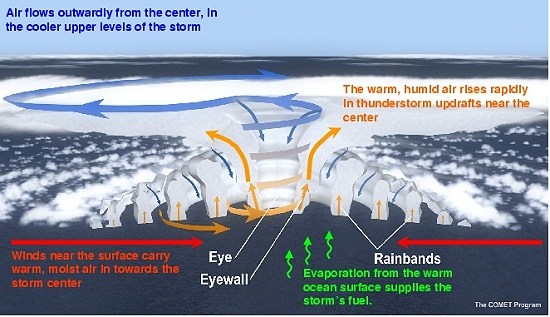The new methods, using physics rather than mathematics as the basis, can be used to forecast the timing of Category 5 hurricanes, the most severe level on the Saffir-Simpson scale.
Category 5 hurricanes have sustained wind speeds of up to 250 km/hr, with catastrophic impacts on homes, lives and infrastructure. The most recent Category 5 hurricanes to strike Mexico are Dean (2007), Wilma (2005), Mitch (1998), Gilbert (1988) and Beulah (1967).
Scientists at the Geophysics Institute of the National University (UNAM) in Mexico City have developed a physics-based model, relying on three-dimensional imaging, which can be used to predict severe (Category 5) hurricanes. They have also pin-pointed precisely where in the deep waters of the Atlantic Ocean severe hurricanes are most likely to originate. The scientists conclude that severe hurricanes do not occur randomly in time, but tend to occur at roughly cyclical intervals, about every ten years.
They hope that the new techniques will improve the forecasting associated with these severe weather hazards, and offer more lead-in time for the updating and implementation of evacuation plans and other mitigation measures.
Lead investigator Víctor Manuel Velasco Herrera says that, according to the model, the next period when Category 5 hurricanes will occur will begin in 2013 and end in 2017, “with a margin of error of one year.”
Watch this space for updates in due course!
Previous posts related to hurricane prediction:
- How good were the 2010 hurricane predictions?
- How many hurricanes are likely in the 2010 Atlantic hurricane season?
- In which months are hurricanes most likely to strike Mexico?
- How many hurricanes are likely in the 2010 Atlantic hurricane season?
Hurricanes and other climatological phenomena are analyzed in chapters 4 and 7 of Geo-Mexico: the geography and dynamics of modern Mexico. Buy your copy today, so you have a handy reference guide available whenever you need it.

Sorry, the comment form is closed at this time.